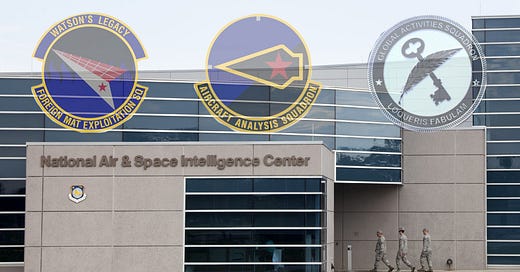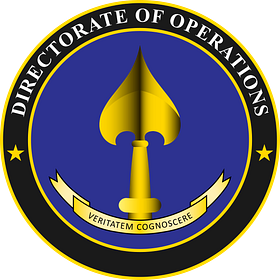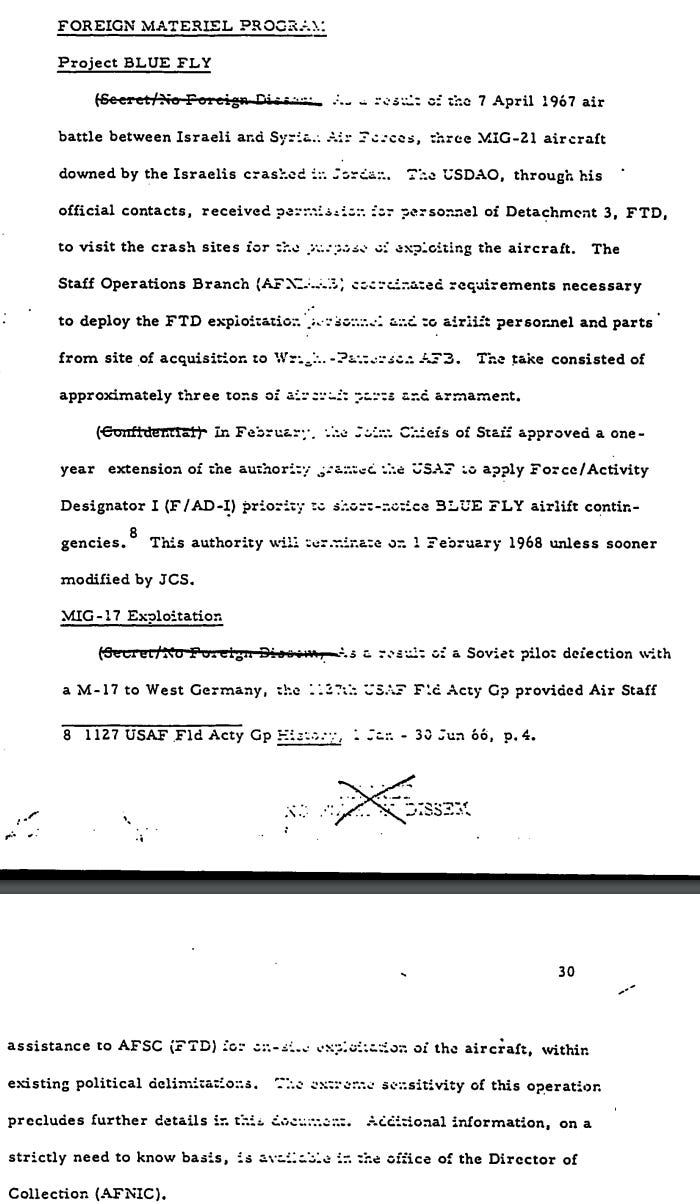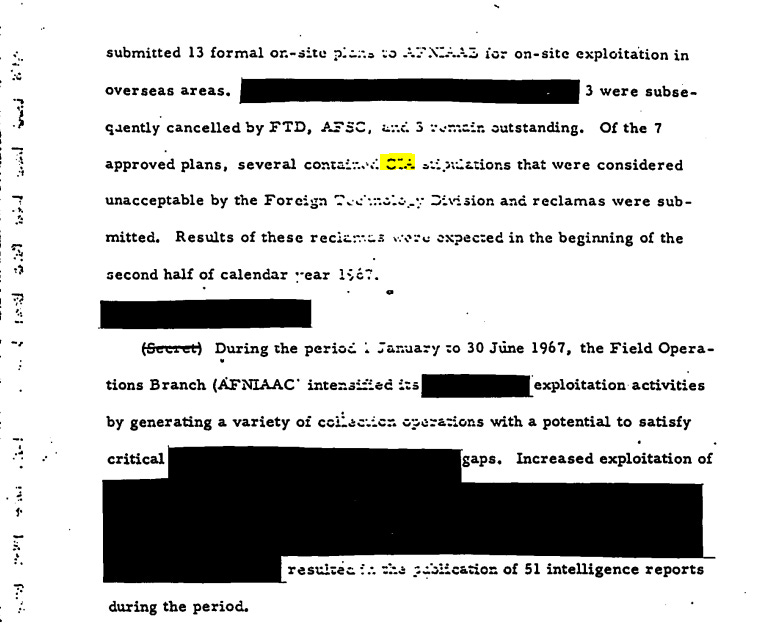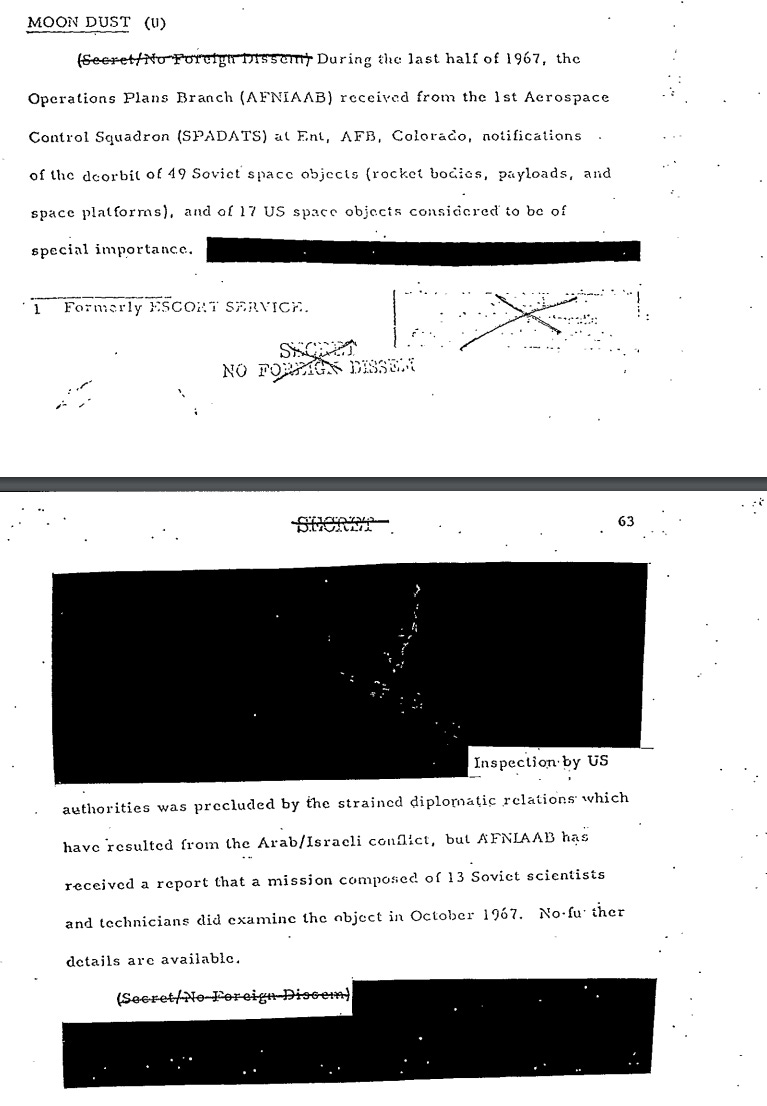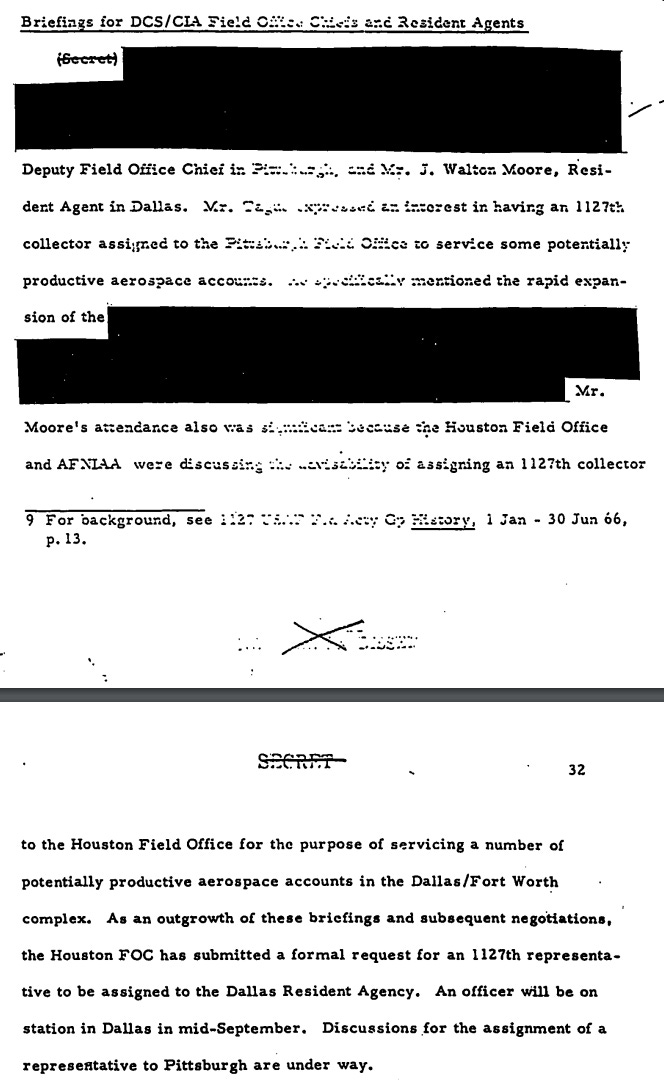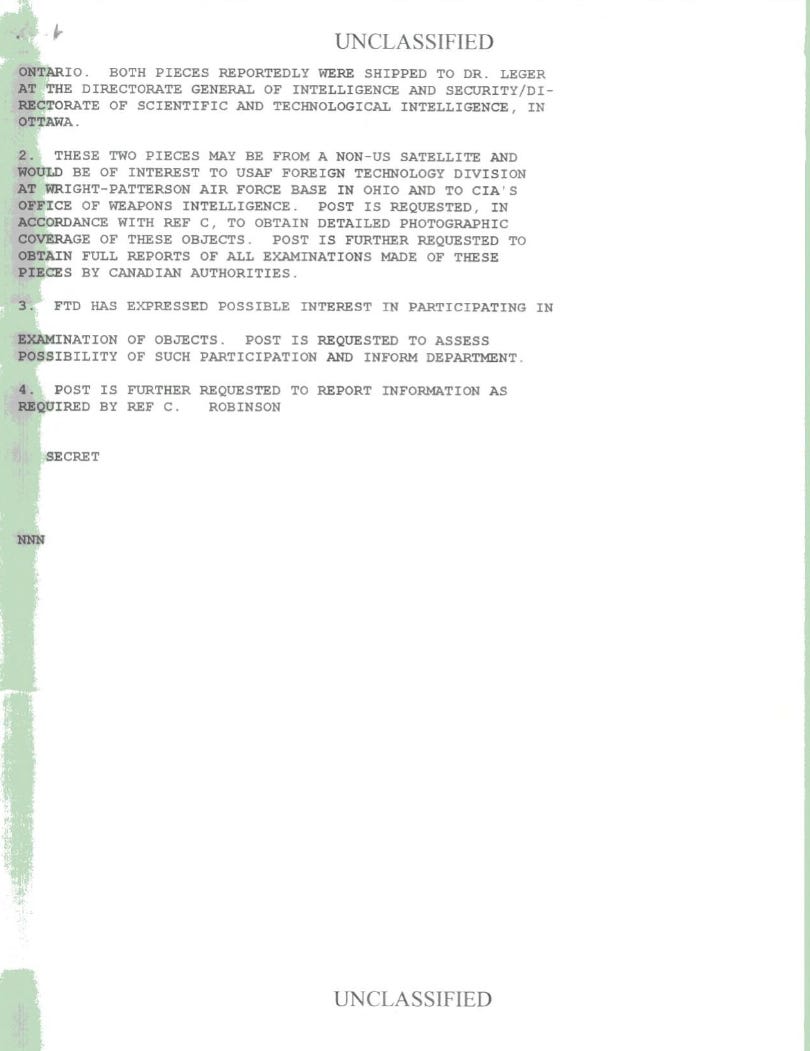NASIC, The CIA & UAP
The heart of Air Force intelligence, NASIC leads in reconnaissance, foreign materiel analysis, and HUMINT, working with the CIA on the UAP issue
A Brief History
Established in 1943 as the Technical Data Section of the U.S. Army Air Forces and located at Wright Patterson AFB Ohio, the National Air and Space Intelligence Center (NASIC) has evolved into a cornerstone of U.S. military intelligence. Originally focused on analyzing captured enemy aircraft during World War II, its mission expanded rapidly to include a wide array of intelligence operations.
The Air Technical Intelligence Center (ATIC) was formally established on May 21, 1951, to centralize these efforts under the U.S. Air Force. Renamed the Foreign Technology Division (FTD) in 1961, the organization deepened its focus on foreign materiel acquisitions and exploitation, setting the stage for cutting-edge analysis during the Cold War.
With the fall of the Soviet Union in 1993, FTD transitioned into the National Air Intelligence Center (NAIC), reflecting a broader strategic intelligence mission. By 2003, the center embraced space-based threats and opportunities, becoming NASIC, and later developed advanced capabilities like its Signals Exploitation Division, ensuring relevance in a new era of global threats.
Squadrons and Specialized Missions
NASIC’s structure today is built around 18 squadrons operating under four management groups, each with unique missions that are as classified as they are critical. Among these, the Foreign Materiel Acquisition and Exploitation squadrons play a pivotal role. Using cutting-edge tools and a legacy of expertise, these teams dissect foreign aircraft, weapons systems, and technologies, unlocking critical intelligence for military planners and policymakers. This reverse-engineering process offers the U.S. a strategic advantage in countering adversarial advancements and understanding vulnerabilities.
Mysteries in the Details
The emblems and patches of NASIC’s squadrons provide a rare glimpse into their secretive work. Each design tells a story—albeit cryptic—hinting at missions far beyond public knowledge. From allusions to space-based reconnaissance to symbols of foreign technology exploitation, these insignias raise compelling questions:
What technologies have these squadrons acquired and analyzed?
Could they be working on materials or systems from beyond Earth or our Dimension?
As whispers of reverse-engineered Unidentified Anomalous Phenomena (UAP) technology only continue to grow in public discourse, NASIC’s storied history and its covert missions make it a prime candidate for such investigations. Diving into the emblems of its squadrons, the connections to both the CIA and the possibility of UAP research becomes a thread too fascinating to ignore.
Author’s Note:
During the research for this article, I was able to locate up-to-date information and emblems for 17 of NASIC’s 18 squadrons. However, two emblems remain elusive, adding yet another layer of mystery to the organization’s already classified operations.
Global Exploitation Intelligence Group (GX)
Aircraft Analysis Squadron

Foreign Materiel Exploitation Squadron
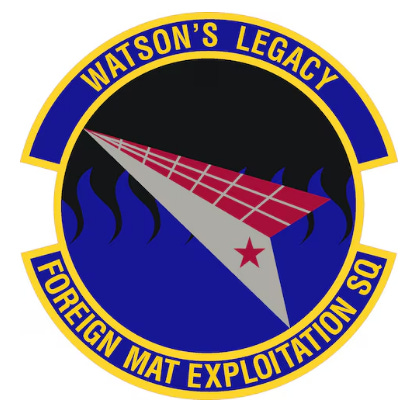
Signals Analysis Squadron (GXS)
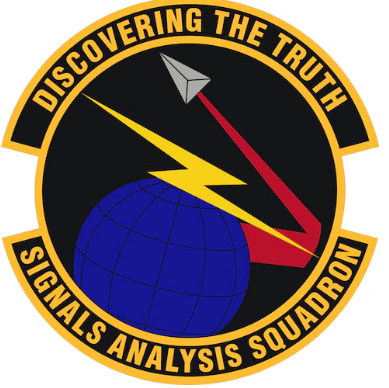
Global Activities Squadron (GXA)
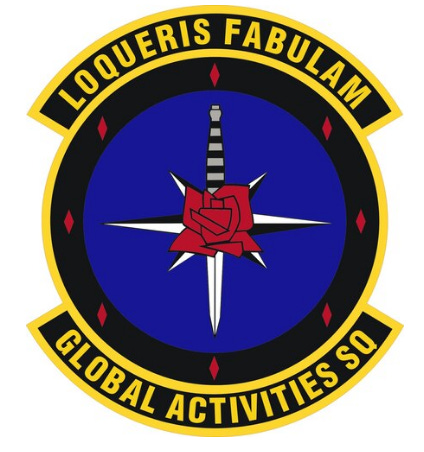
Future Threats Analysis Squadron
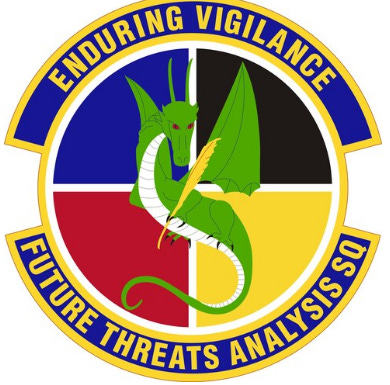
Regional Threats Analysis Squadron
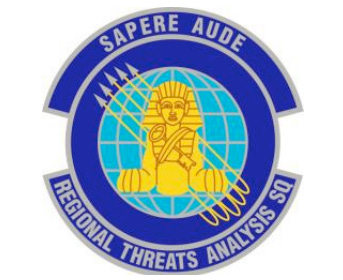
Space and Missiles Analysis Group
1 Space Analysis Squadron under Space Force Command (Formerly Space Analysis Squadron)

2 Space Analysis Squadron under Space Force Command (Formally Counterspace Analysis Squadron)

Ballistic Missiles Analysis Squadron

Air and Cyberspace Intelligence Group
35 Intelligence Squadron (Formally Cyber Analysis Squadron)
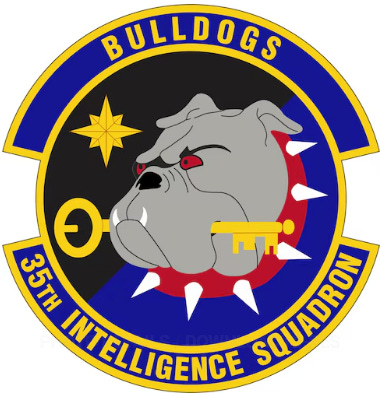
Electronic Analysis Squadron
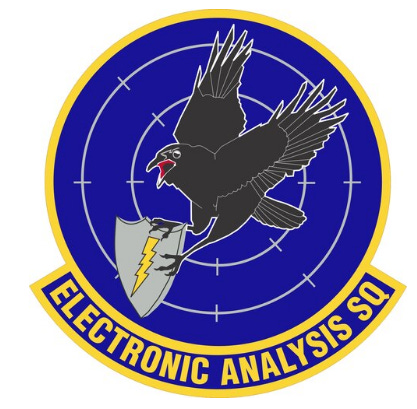
Engineering Analysis Squadron
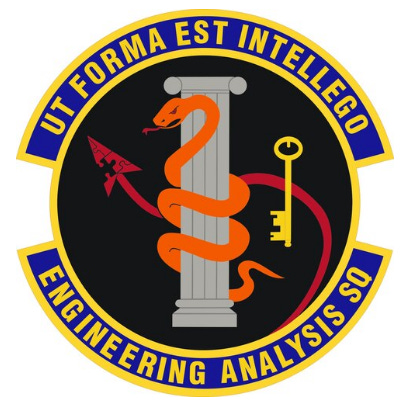
Integrated Command, Control, Communications, Computers, Intelligence, Surveillance and Reconnaissance Analysis Squadron (Formally Integrated Air Defense Systems Analysis Squadron)
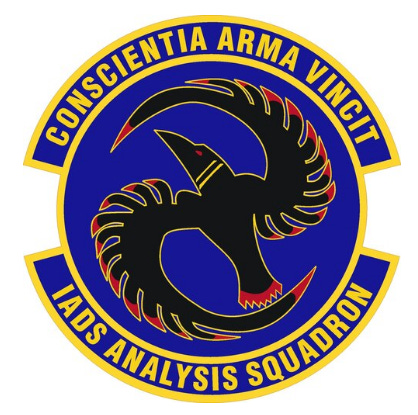
Geospatial and Signatures Intelligence Group
Geospatial Intelligence Measurements and Signatures Intelligence Production Squadron

Geospatial Intelligence Measurements and Signatures Intelligence Analysis Squadron
Emblem not found
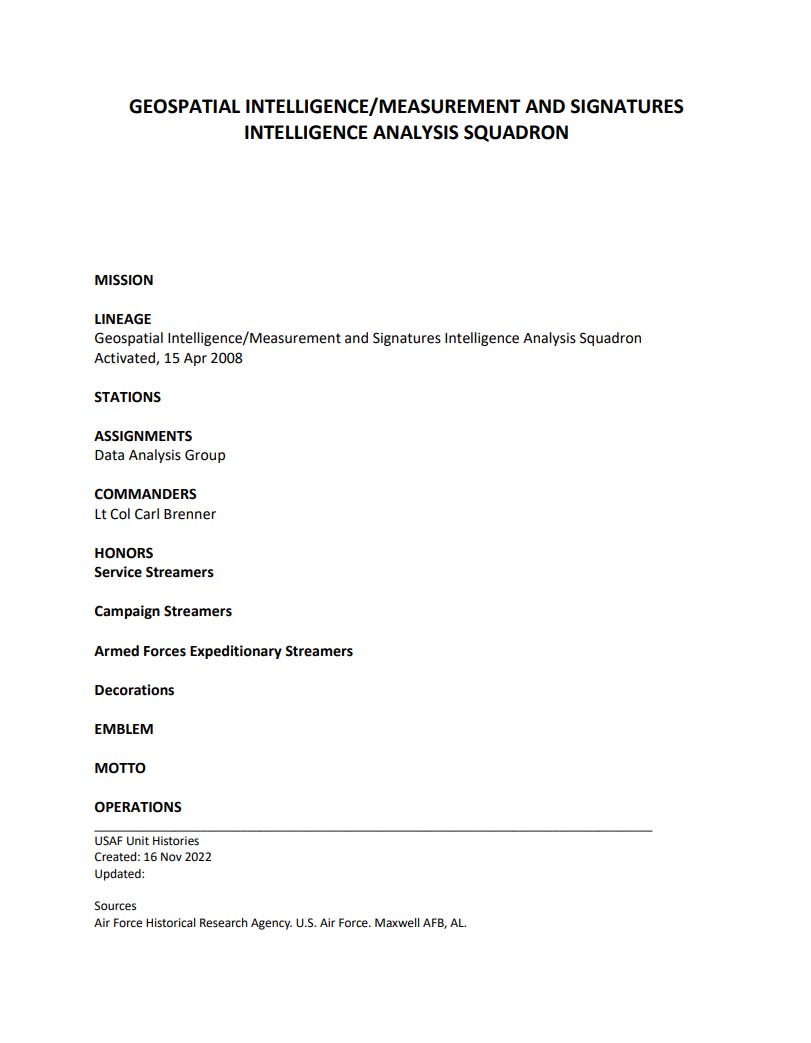
Imagery Analysis Squadron
Emblem not found

Information Exploitation Squadron
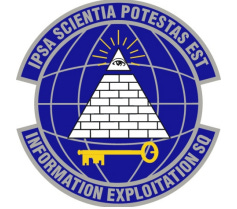
The HUMINT Connection
While NASIC’s core mission revolves around technical intelligence (TECHINT), its operations extend into the realm of human intelligence (HUMINT) through strategic collaborations with the CIA. These clandestine efforts leverage human sources and collectors to access critical insights, from adversaries’ intentions to emerging threats and advanced technologies. This synergy between HUMINT and TECHINT enables a more comprehensive intelligence picture. NASIC’s HUMINT operations are conducted under Title 10 authorities, emphasizing military oversight while accommodating joint operations with civilian agencies.
At the heart of NASIC’s HUMINT efforts is the Global Exploitation Intelligence Group (GX), which oversees the Global Activities Squadron (GXA). Operating detachments worldwide, GXA conducts missions that blend traditional military intelligence with covert human-centric operations.
Within GXA units, CIA agents often embed to augment these missions, further enriching the HUMINT-TECHINT collaboration. The unit’s emblem, encapsulated in its challenge coin, reveals intriguing details about its mission and symbolism.
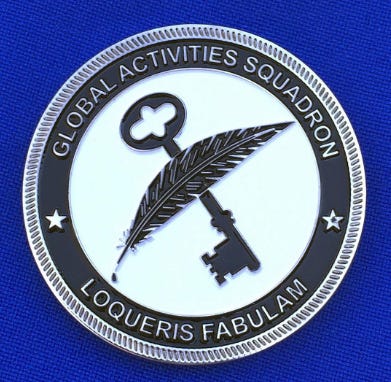
The GXA challenge coin, emblematic of the squadron's mission, contains rich symbolic elements:
Ultramarine Blue and Air Force Yellow: Reflect the Air Force colors, symbolizing the sky and excellence in operations.
The Polestar and Dagger: Represent the squadron's readiness and military preparedness for global missions.
The Rose: A subtle nod to the human factor in intelligence, highlighting the interpersonal nature of HUMINT.
Eight Fusils (Diamonds): Signify travel and labor, emphasizing the unit’s worldwide reach and relentless efforts.
Motto—'Loqueris Fabulam': Translating to 'Tell Me Your Story', the motto reinforces the squadron's focus on uncovering narratives and intelligence through personal engagement.
This emblem’s design embodies the integration of human and technical intelligence, offering a glimpse into the specialized and covert missions of GXA. The coin, along with the unit’s operations, underscores the depth of collaboration between NASIC and the CIA.
This could have some overlap to a previous article "Blue Border" with certain CIA HUMINT being classified to that level:
"Blue Border"
Following a lead from Jacques Vallee's Forbidden Science Volume 5, where Col. John Alexander supposedly stated that "Blue Border" was a level of special access that could "get people killed", I began digging into this. However, I eventually set it aside as I seemed to hit a dead end in linking the information I found to UAP activities or programs.
Fitting the Pieces Together
To better understand NASIC’s and the CIA’s importance in the context of UAP, it’s essential to examine historical documents that shed light on the integration and purposes of their programs and units.
Foreign Materiel Program & The 1127th Field Activities Group
The 1127th Field Activities Group, headquartered at Fort Belvoir, VA, during the 1960s and 70s, played a critical role in intelligence operations involving foreign technology. This squadron appears repeatedly in Project Moon Dust records and communications, especially concerning the recovery of unknown objects in foreign territories.
A declassified historical document details how the 1127th facilitated Air Staff efforts to deploy Foreign Technology Division (FTD) personnel to foreign sites for the exploitation of crashed aircraft. These recovered craft were often transported to Wright-Patterson Air Force Base for further analysis.
The document also notes that personnel from these units were granted access to denied areas for “on-site conference exploitation.” This terminology suggests involvement from additional agencies, such as the DIA and CIA, in these operations.
Given that Project Moon Dust specifically targeted objects originating from space, it stands to reason that the same recovery and exploitation methods could be applied to UAP crashes. A State Department memo explicitly mentions both the FTD and the 1127th Field Activities Group as participants in Moon Dust, emphasizing their dual role in recovering and analyzing unknown space objects and handling crashed aircraft under Project Blue Fly.
Further corroboration of the 1127th’s connection to Moon Dust comes from an official document outlining the group’s functions. It specifies their role in the recovery and exploitation of unknown space objects. Notably, it mentions an incident where Soviet scientists examined an unidentified object but failed to determine its origin—an event that would have likely involved the 1127th if diplomatic conditions had allowed.
Many of the 1127th’s functions appear to have been absorbed into NASIC, particularly within the Global Activities Squadron, the Foreign Materiel Exploitation Squadron, and the Aircraft Analysis Squadron.
CIA Integration
As observed on the historical document mentioned earlier, the CIA maintained a close partnership with the 1127th, embedding personnel during exploitation missions and housing 1127th collectors in field offices to support aerospace accounts.
The CIA’s role in Project Moon Dust extended beyond recovery logistics. For example, in one case involving metallic fragments suspected to be from a non-U.S. satellite, both the FTD and the CIA’s Office of Weapons Intelligence (OWI) sought to analyze the material.
This historical involvement aligns with recent reporting suggesting that the Weapons and Counterproliferation Mission Center (WCP)—the modern successor to the OWI—plays a significant role in UAP and non-human intelligence (NHI) matters.
OWI and OSI Evolution:
1950s: The Office of Scientific Intelligence (OSI) was deeply involved in UFO research, as noted in several reports referencing the Air Technical Intelligence Center (ATIC)—a precursor to NASIC.
1980: OSI and OWI merged into the Office of Scientific and Weapons Research (OSWR).
2001: OSWR restructured into WINPAC (Weapons Intelligence, Nonproliferation, and Arms Control).
2015: WINPAC became the Weapons and Counterproliferation Mission Center (WCP).
These transitions illustrate a continuum of intelligence expertise that persists today, linking NASIC’s predecessors with modern efforts in analyzing UAP phenomena.
Jonathan Gray and UAP Analysis
This lineage ties directly to individuals like Jonathan Gray, reportedly based at NASIC, who specializes in UAP analysis. Gray's work underscores NASIC's enduring focus on foreign technology and unexplained aerial phenomena, suggesting its continued involvement—alongside the CIA—in UAP recovery and analysis.


